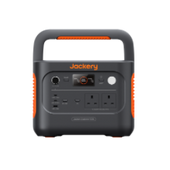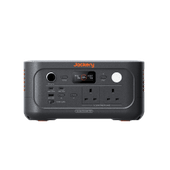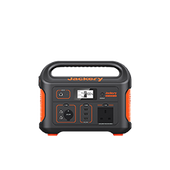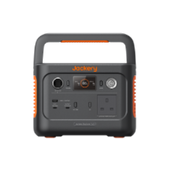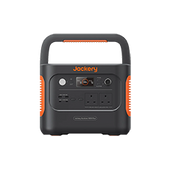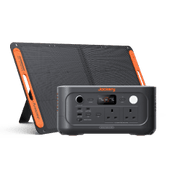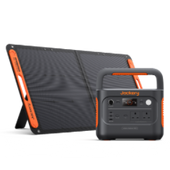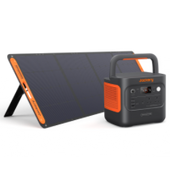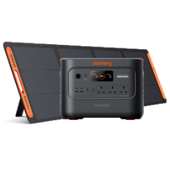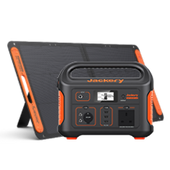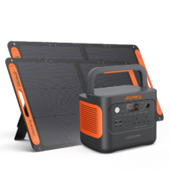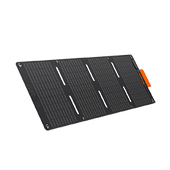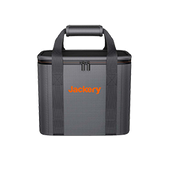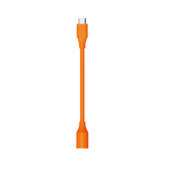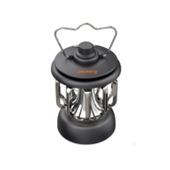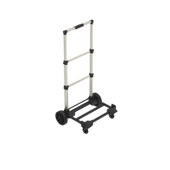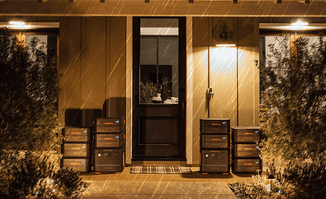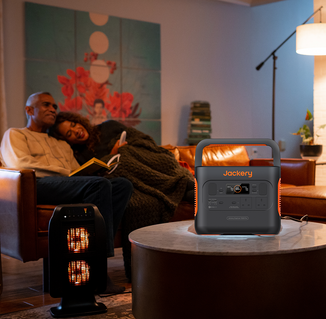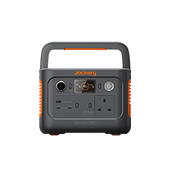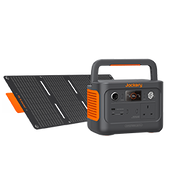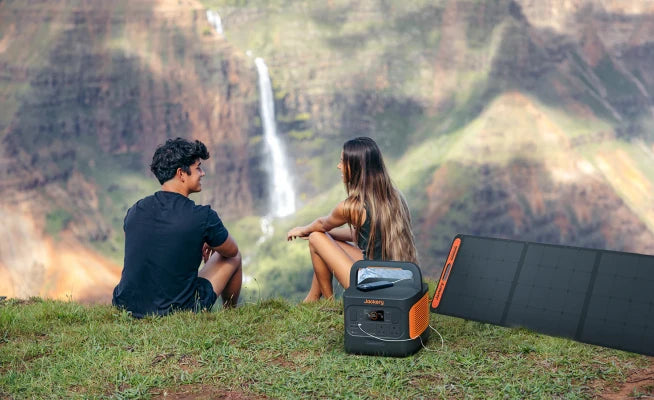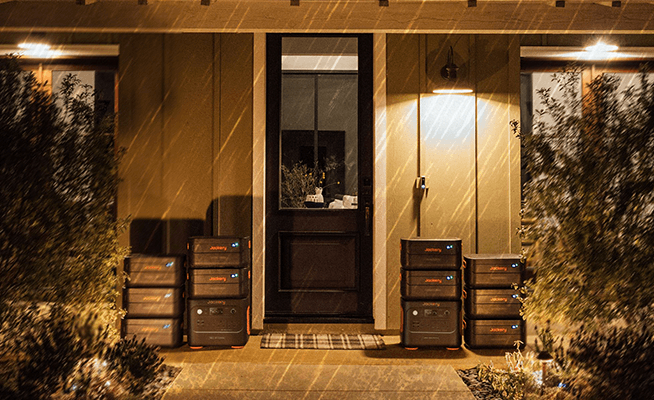The sky is overcast, the weather is turning cool... winter is truly here. Winter nights in the UK can be freezing, so keeping warm at night becomes a top priority. While we can't change the weather outside, we can control our indoor environment.
From turning on the heater and laying out a rug to wearing pyjamas, many things can help us stay comfortable and get a good night's sleep during the cold months. If you're concerned about rising heating bills in winter, consider using a Jackery Explorer 3000 v2 or 2000 Plus portable power station to charge your heating appliances during peak hours, helping to balance nighttime heating costs.
|
Key Takeaways: |
|
Why Is It Important to Keep Warm at Night?
As winter approaches, keeping warm at night has become a new priority. So, why is staying warm at night so important? It is not just about comfort, but also about health and sleep quality. Here are some specific reasons:
Coping with Cold Weather
The United Kingdom has a moderate maritime climate that is pleasant but moist throughout the year, especially in winter. While an acute cold is infrequent, high humidity intensifies the impression of cold, with overnight temperatures frequently dropping below 5°C and snowfall common in the north and Scotland. Furthermore, many older homes in the UK lack adequate insulation, have weak walls, and are prone to draughts, resulting in rapid heat loss.
Improving Sleep Quality
Staying warm at night creates a comfortable sleeping environment, making it easier to fall and stay asleep. When the body feels cold, it instinctively stiffens, causing muscle spasms that can disrupt sleep and lead to frequent awakenings or light sleep. Maintaining a comfortable temperature, such as wearing warm socks and using suitable blankets, can help the body relax and feel more at ease, leading to improved sleep quality.
Preventing Illness
Nighttime temperatures are often lower, and insufficient warmth can easily irritate the respiratory system, causing respiratory illnesses such as colds, coughing, and asthma. Furthermore, cold weather causes blood vessels to constrict, which raises blood pressure and places additional strain on the heart.
Individuals with cardiovascular issues should make a special effort to stay warm at night. Cold exposure at night can cause serious cardiovascular problems like angina, myocardial infarction, and stroke.
How to Keep Warm at Night: Before Going to Bed
With the harsh British winter fast approaching and temperatures plummeting, keeping warm at night has become a top priority. Try these affordable tips to help you stay warm at home this winter.

Tip 1: Adjust Your Bed Position
No matter how thick the curtains or how well the windows are sealed, cold air will still seep into the room. Older British buildings often have poorly sealed windows. Therefore, moving your bed slightly away from the window can make a significant difference in keeping you warm at night.
Tip 2: Draw the Curtains Quickly
Be sure to draw the curtains as soon as possible after sunset to keep the room warm and cosy. Additionally, consider purchasing thicker curtains or insulated curtain linings to help block cold air from entering and prevent heat loss.
Tip 3: Install Window Strips
You should check your bedroom for drafts. No matter how well your doors and windows are sealed, some cold air will still enter the room. To reduce cold drafts, install rubber window strips and seal any gaps in the door frame with rolled-up towels or long doorstops.
Tip 4: Place a Soft Rug
Hard floors, such as wood or slate, trap cold air on the surface, while soft rugs do not. It's best to place a thick, long-pile rug next to the bed. This effectively insulates against cold floor air and improves foot comfort when getting in and out of bed. Choose a rug made of natural fibres such as wool or sheepskin; the fluffier, the better.
Tip 5: Turn on the Heating System or Electric Heater
Many central heating systems allow you to set timers to control the heating time. You can set a timer to heat the bedroom to approximately 16-18 degrees Celsius when you're ready to sleep. If you don't have central heating, you can use an electric heater to quickly and effectively warm the bedroom; place it in a safe location and avoid covering it.
Tip 6: Use a Thicker Down Comforter
Generally, the warmer the comforter, the warmer the bed will be. A comforter's warmth is measured by its "Tog value." The higher the Tog value, the warmer the comforter will be. In winter, comforters with a Tog value between 10.5 and 13.5 are ideal for providing optimal warmth. If you are allergic to down, consider a comforter made of wool or synthetic fibre instead.

Tip 7: Choose Insulating Bedding
Some materials are warmer than others, so selecting a suitable insulating sheet is crucial to prevent heat loss at night. Buy flannel or wool bedding. These materials are the warmest bedding choices because they retain body heat and offer better insulation than cotton. Using a thicker down comforter also provides extra warmth.
Tip 8: Use an Electric Blanket
An electric blanket, whether standard or portable, may preheat your mattress for a more comfortable night's sleep. Electric blankets often reach a comfortable temperature in 5-10 minutes. They are far more energy-efficient than heaters and provide continuous warmth throughout the night. To save energy and avoid overheating, set them on low or set a timer before going to bed.
Tip 9: Take a Hot Bath
There's a reason that having a bath before bedtime is so popular. A hot bath or shower about an hour before bed relaxes your mind and body while warming you up. Remember that the water temperature should be moderate, not very hot. If the water is excessively hot, your body temperature will drop to adjust rather than rise. Lavender bath salts or a bubble bath can help you fall asleep more easily.
Tip 10: Drink a Hot Beverage
Drinking a hot beverage before bed can be highly beneficial, as it helps warm your body and relax you. Try hot chocolate, a cup of tea (such as herbal tea), or a classic warm milk, avoiding caffeine. Avoid alcohol. While it may feel warm at first, it actually lowers your core body temperature.
Tip 11: Maintain Moderate Activity
Light activity before bed can promote blood circulation and raise body temperature, but avoid strenuous exercise. Try some gentle stretches, yoga, or quickly tidying up your room. Even just moving your arms and legs, or wiggling your fingers and/or toes, can help you stay warm and healthy. Once you feel warm, get into bed and keep the heat in bed.
How to Keep Warm at Night: While Sleeping
Staying warm during the night in the UK is crucial, especially during the cooler autumn and winter months. Here are some simple tips to maximise warmth and comfort in bed while you sleep.

Tip 1: Wear Thick Pajamas
Select comfortable, warm long-sleeved tops and trousers made of soft, breathable cotton or fleece. These offer sound insulation while remaining breathable, preventing overheating and nighttime sweating. Furthermore, natural textiles such as wool trap air and serve as insulation, while wool blends are even more breathable. Avoid wearing too tight garments; looser fits allow for better air retention.
Tip 2: Wear Thick Socks
Your feet lose a lot of heat while sleeping. Cold feet reduce overall warmth, so keep them warm. Wearing thick wool socks helps to regulate core body temperature, stimulates blood circulation, and enhances overall sleep quality. Cotton socks, when damp with sweat, seem colder. Alternatively, foot warmers provide immediate warmth and relaxation, making them an excellent aid for pre-sleep relaxation.
Tip 3: Wear a Nightcap
Wearing a nightcap to bed may seem outdated, but it's effective. A considerable portion of body heat is lost through the cranium. A comfortable cotton or wool hat helps keep the heat in.
Tip 4: Add Extra Blankets
Multiple layers of blankets help retain warm air in the bed and are easily removable if it becomes too hot. Try using a flannel or wool blanket, or an old comforter. Consider adding a weighted blanket for extra comfort, as it efficiently keeps cold air out of the bed and helps keep you warm.
Tip 5: Use a Hot Water Bottle
A hot water bottle is an inexpensive and straightforward way to stay warm at night, providing a constant supply of warmth. Fill it with water that is roughly 80°C rather than boiling. After filling it, tighten the cap and turn it upside down to check for leaks. You can set it near your feet or embrace it tightly, whichever feels most comfortable. To avoid burns and maintain warmth, wrap it in a wool or flannel cover.
Tip 6: Light Movements in Bed
When it's too cold to sleep, try tossing and turning in bed to generate heat. Rubbing your hands and feet can also help you warm up quickly and fall asleep faster. Alternatively, you can perform simple stretching exercises, such as air cycling or hugging your knees to your chest, which can help promote blood circulation and generate body heat quickly. However, be cautious not to engage in anything too strenuous and break a sweat.
Tip 7: Snuggling with Your Pet
On a cold night, nothing is more comforting than the company of a furry companion. A pet's body heat can provide extra warmth, but ensure your pet is clean, healthy, and doesn't disrupt your sleep habits; otherwise, it may affect your own sleep quality.
Will Keeping Warm at Night Cost More Electricity and Money?
Yes, in the United Kingdom, staying warm at night can dramatically boost electricity expenditures. This means that turning on the heat, electric blankets, and other equipment at night will directly increase your electricity cost. However, the price is determined by what you utilise. For example, running central heating all night can result in higher electricity and financial costs.
It is predicted that running the heating for eight hours at night will cost around £13.44 per week. This is because, even when the system is set to a low temperature, it still uses energy to heat the house. Furthermore, dwellings lose heat over time, particularly at night; thus, continuous heating systems must work harder to compensate for this heat loss and maintain an acceptable temperature.
Therefore, people are looking for ways to effectively reduce the increased electricity bills associated with staying warm at night. The following suggestions are for reference only:
Set Timers
Utilise the timer function of heating appliances, such as electric heaters, to turn them on an hour before bedtime and automatically turn them off or lower the temperature when you fall asleep, thereby avoiding running them all night. For example, set them to run from 11:00 PM to 6:00 AM to align with your sleep cycle.
Install Smart Meters
Smart meters monitor electricity consumption data in real time, identify high-energy-consuming periods and devices, and help users adjust their usage habits to reduce unnecessary energy consumption.
Utilise Off-Peak Electricity
Suppose you are using off-peak electricity rates, such as Economy 7. In that case, you can fully charge your home battery system (such as Jackery Explorer portable power banks) during off-peak hours to power heating equipment for use during expensive peak hours.
Apply for Government Grants
Please check if you are eligible for assistance with energy costs (including electricity bills):
|
Subsidies |
More Details |
|
This UK government-run scheme is designed for welfare recipients or individuals with low incomes. |
|
|
In England and Wales, welfare recipients can receive this allowance during prolonged periods of severe cold. |
|
|
Individuals born before September 23, 1958, may be eligible for this allowance to cover heating costs. |
Utilise Renewable Energy
Install a solar photovoltaic system to generate and store electricity during the day and use it for heating at night, reducing reliance on the grid. Alternatively, you can use a portable power station (such as the Jackery Explorer 3000 v2 or 2000 Plus) with solar panels instead of a complex and expensive full-fledged solar photovoltaic system.

Jackery: Keeping Warm at Night While Keeping Your Electricity Bills Stable
As winter approaches and nighttime temperatures plummet, many households face the challenge of keeping warm at night. How can one have a warm and comfortable night without dramatically increasing electricity bills? Jackery offers a range of innovative, energy-efficient, and flexible energy solutions, including the Jackery Portable Power Station, to help users achieve the dual goals of a comfortable night and stable electricity expenses.
Costs can be managed by charging during off-peak hours and discharging during peak hours with a Jackery Portable Power Station. Alternatively, Jackery Solar Panels can be utilised to generate electricity from solar power, allowing for partial energy self-sufficiency and minimising reliance on the grid.
|
Jackery Portable Power Station Running Time |
||
|
Heating Appliances |
Jackery Explorer 3000 v2 (3072 Wh) |
Jackery Explorer 2000 Plus (2-12 kWh) |
|
Electric Blanket (150W) |
16.4 Hrs |
11-64 Hrs |
|
Electric Heater (2000W) |
1.2 Hrs |
0.8-4.8 Hrs |
|
Small Portable Space Heater (800W) |
3.1 Hrs |
2-12 Hrs |
|
Heated Throw (150W) |
16.4 Hrs |
11-64 Hrs |
|
Electric Kettle (1500W) |
1.6 Hrs |
1.1-6.4 Hrs |
Jackery Explorer 3000 v2
The Jackery Explorer 3000 v2 is a large-capacity, portable power station with a high power output, making it suitable for powering appliances in cold weather or during winter. It provides safe and effective overnight warming without considerably raising electricity costs.

Precisely Matches Low-Power Heating Devices: The Jackery Explorer 3000 v2 has a 3072Wh battery capacity and a 3600W pure sine wave output (7200W peak power), which is enough to power most domestic heating systems, including oil-filled radiators, fan heaters, and electric blankets. For example, it can power a 150W electric blanket for about 16.4 hours, providing enough heat for the entire night.
Reduced Dependence on Mains Electricity by Utilising Solar Charging: The Jackery Explorer 3000 v2 can be charged during the day using solar panels (such as the SolarSaga 200W solar panels), achieving zero-electricity energy storage. It supports a maximum solar input power of 1000W and fully charges in just 3.5 hours. It maximises solar energy utilisation by prioritising stored solar power over grid power, reducing reliance on the grid and lowering electricity bills by 22% through solar charging.
Smart Scheduling for Optimised Electricity Usage: The Jackery Explorer 3000 v2's timed off-peak charging is especially suitable for users with time-of-use pricing or smart meters, allowing you to charge during off-peak hours when electricity prices are lower. Connect to a power source and activate the "Charging Plan" via the app to customise charging times and take full advantage of cheaper electricity rates. Avoiding peak-hour pricing can save you up to 15% on your annual electricity bill.
As an Emergency or Auxiliary Power Supply, reducing main circuit load, the Jackery Explorer 3000 v2 features a built-in UPS (Uninterruptible Power Supply) that provides independent heating power even during power outages or severe weather, enhancing energy efficiency and ensuring consistent warmth. It has a switching time of less than 20 milliseconds, allowing heating appliances, such as electric heaters, to run continuously.
Jackery Explorer 2000 Plus
The Jackery Explorer 2000 Plus, a high-performance portable power bank, offers users a smart alternative for maintaining comfortable temperatures while effectively managing electricity expenses.

High Capacity and High Power Output, Supporting Mainstream Heating Devices: The Jackery Explorer 2000 Plus boasts a large 2042.8 kWh battery, providing several hours of continuous power at medium power levels. One Explorer 2000 Plus power bank can simultaneously support up to 5 additional battery packs, expanding the capacity from 2 kWh to an impressive 12 kWh. It also features a 3000W high-power output (6000W peak), efficiently powering standard heating devices such as small electric heaters, fan heaters, and oil-filled radiators, meeting nighttime heating needs.
Off-Peak Charging + Peak Use, Optimising Electricity Costs: The Jackery Explorer 2000 Plus charges automatically during off-peak hours and uses pricey peak hours to power heating appliances, achieving "buy low, use high" and stabilising energy costs. The Jackery App enables you to control and monitor your 2000 Plus in real-time, including battery level, power consumption, and operational status. You can also configure load priorities to distribute electricity resources better and reduce waste.
Multi-Mode Charging Enhances Energy Efficiency and Economy: The Jackery Explorer 2000 Plus supports various charging methods, including wall charging (standard AC), solar charging (e.g., SolarSaga 100W, SolarSaga 200W), and vehicle charging. It can be fully charged in around two hours with an AC adapter. During the day, solar electricity can replenish the battery, further reducing reliance on the grid. For example, connecting six SolarSaga 200W chargers will fully charge it in approximately 2 hours and 24 minutes.
Quiet and Safe, Suitable for Indoor Use at Night: Unlike a petrol generator, the Jackery Explorer 2000 Plus functions quietly, with a noise level of only 30 decibels, allowing you to sleep uninterrupted. It produces no emissions or contaminants, making it ideal for indoor use without the risk of carbon monoxide poisoning. This extraordinary lithium-iron-phosphate (LiFePO4) battery is designed to last for up to ten years, even with only one charge per day. Even after 4000 charge cycles, the battery maintains 70% of its capacity.
FAQs
The following are the frequently asked questions about how to keep warm at night:
1. How to stop being so cold at night?
To avoid feeling cold at night, lay out thick blankets, wear warm pyjamas, preheat the bed with an electric blanket, and ensure there are no cold drafts in the room. Drinking a warm beverage or taking a hot bath before bed can help raise your body temperature. If you still feel cold, add more blankets or a thicker down comforter.
2. How to keep warm at night without heating?
If you can't use the heating, cover yourself with several blankets and quilts, use a hot water bottle to warm up, and wear warm pyjamas and socks to stay warm at night. Alternatively, you can take a hot bath or drink a caffeine-free hot beverage before bed to help warm your body and promote relaxation.
3. Why is my bed so cold when I get in?
There could be several reasons why you feel cold after getting into bed. First, the blankets haven't warmed up with your body heat yet and need time to warm up, so they feel chilly at first. Second, the room temperature might be too low, especially in environments without heating or air conditioning, making it difficult for the blankets to stay warm. Third, if you took a hot bath before bed or sweated after exercise, your pores open, and heat dissipates quickly after getting into bed, making you feel cold.
4. What is the best way to stay warm at night?
Putting on fleece or flannel clothes at night will help keep you warm because they keep the heat in. Also, don't forget your feet. Bed socks will help you sleep and keep your feet warm. Hot water bottle: A hot water bottle is comfortable, safe, and won't break the bank. It will keep you warm all night.
Final Thoughts
From home tips to energy-efficient products, the practical tips on how to keep warm at night mentioned in this article will help you sleep comfortably all night. Finding the perfect temperature at night may require some trial and error.
If you're particularly sensitive to the cold, consider laying down a rug, using a thick duvet, or using an electric blanket, and taking a hot bath before bed to help you get a good night's sleep. If none of these methods work, then you can turn on the heating system. However, this will significantly increase electricity bills, which can be improved by using a Jackery Portable Power Station and even with Jackery Solar Panels.



